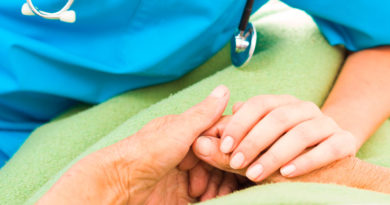Are you suffering from constipation or Obstructive Defecation Syndrome???
By Dr. Roy Patankar, leading Gastroenterologist & Director of Zen Hospital
Do you tend to pass hard stools? Or strain excessively while passing stool? It may not be constipation, instead, you must be suffering from a condition called obstructive defecation syndrome. Yes, you have heard us here! Here, we brief you about this condition.
Obstructive defecation syndrome (ODS) can be termed as the inability to pass stool through the digestive tract out of the rectum. This might be characterized by the need to strain with bowel movements, multiple unproductive urges, incomplete emptying or sensation of a blockage. Some individuals may also experience accidental bowel leakage. According to a study published in the Indian Journal of Radiology and Imaging in 2015, patients with obstructed defecation syndrome (ODS) form an important subset of patients with chronic constipation. Magnetic resonance defecography (MRD) is a very useful tool for the evaluation of these patients. Patients with significant structural abnormalities may benefit from surgical interventions like stapled transanal resection of rectum (STARR). Moreover, biofeedback is the backbone of therapy of obstructed defecation.
Here, we explain you the difference between obstructive defecation syndrome and constipation.
Decoding the connection between Obstructive defecation syndrome and constipation
Tons of research suggests that obstructive defecation syndrome (ODS) is one of the main causes of primary constipation. Constipation has a high prevalence in the general population and is a cause for significant morbidity. It is caused by anatomical disorders in the pelvic floor region (rectocoele, en-terocoele, rectal intussusception, rectal prolapse), but it always occurs in combination with a functional defect of defecation. The ones who have the problem of chronic constipation may be at the risk of obstructed defecation. Constipation caused owing to the obstructed defecation is of two basic types: functional and mechanical. Moreover, repeated stretching of the pelvic floor musculature and nerves owing to childbirth, issues with rectal sensory perception and psychological factors have been implicated in the pathogenesis of obstructed defecation syndrome.
Below are the symptoms of obstructive defecation syndrome
Are you aware? The most common symptom of obstructive defecation is the feeling of more stools remaining in the rectum after attempting to pass stool. Furthermore, the other symptoms may include straining to empty, passing hard stools, excessive or prolonged straining while passing stool, routine usage of laxatives or enemas, prolonged or unsuccessful efforts to evacuate a motion, long hours spent in the bathroom, a sensation of incomplete emptying or difficulty wiping clean.
All you need to know about the causes of obstructive defecation syndrome
You will be shocked to know that failure to relax the anal sphincter or pelvic floor muscles while trying to defecate is a common functional cause of obstructive defecation which is also known as anismus or pelvic floor dyssynergia. Thus, the condition tends to improve with the help of pelvic floor physiotherapy and biofeedback.
Moreover, a weakness in the rectovaginal septum may also allow the rectum to push forward against the posterior vaginal wall and herniate. Some women tend to become aware of a bulge in the vagina, sometimes causing problems with intercourse, while the others may feel a dragging sensation, particularly towards the end of the day if they have been lifting or spent a lot of time standing. Not only this, internal rectal prolapse (rectal intussusception) can obstruct the bowel lumen/passage of faeces and often coexists with a rectocele. Also, a hernia of the small bowel or sigmoid colon through the Pouch of Douglas can obstruct defecation and lead to difficulty with evacuation. Obstructive defecation can be caused by structural deformities due to hereditary, injury, or age, problems with your digestive tract, impacted stool, or neurologic issues.
The diagnosis
According to a study published the Indian Journal of Radiology and Imaging in 2015, various modalities have been used for the evaluation of ODS. These include fluoroscopic defecography and MRD. MRD can be performed in open magnets in a sitting position or in closed tunnel magnets in a supine position. The MRD is performed, and no prior colon preparation is necessary. Three hundred milliliters of ultrasound jelly is instilled in the patient’s rectum using rectal tube in left lateral decubitus position. The patient is then made to lie down in the supine position on the MR machine gantry and imaging is performed using an 8-channel pelvic phased array coil. All patients undergo colonoscopy prior to the MRD to exclude other colonic pathologies like colon neoplasms and polyps. The dangerous symptoms of large intestinal cancer like alternate constipation, diarrhea, weight loss, mucus in stool or family history of large intestinal cancer.
The treatment for obstructive defecation syndrome
Various treatment options are available for patients with ODS and imaging plays a very important role in deciding the optimal treatment strategy for a particular patient. If imaging does not reveal significant structural abnormalities, then the patient is offered conservative treatment like diet and lifestyle modifications and biofeedback therapy. You will be advised to opt for a healthy and well-balanced diet along with staying hydrated and drinking a lot of water. You must also see to it that you include fibre-rich foods in your diet to regulate your bowel movements. Moreover, the patients will also be prescribed stool softeners. You must pay attention towards your bowel movement, and cultivate the habit of visiting the loo regularly even with your hectic schedules. Not only this, pelvic floor physiotherapy is the first-line treatment for most patients and includes instruction about the positioning on the toilet, relaxation of the abdominal and pelvic floor muscles, avoiding straining and breath holding, and promoting correct techniques to allow unobstructed defecation.
Speaking about the surgeries- one can be asked to undergo rectocele repair by the doctor. It is a standard posterior repair, sometimes with perineorrhaphy, is the most common procedure when patients complain of ODS and a bulge in the vagina secondary to a rectocele. One can also opt for Stapled transanal resection of the rectum which is a transanal approach and can be used to treat a rectocele and prolapsing rectal mucosa causing intussusception. Also, laparoscopic ventral rectopexy can be helpful as this is particularly suitable for women with a visible external prolapse of the rectum and obstructive defecation, although the operation can also be performed for those with intussusception on defecography.




